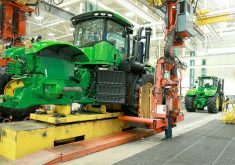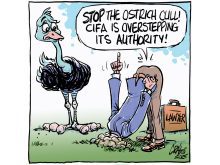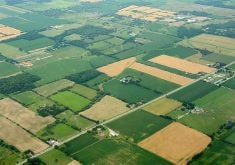THE case of one lonely northern Alberta mad cow will answer some key questions about Ottawa’s much-promoted agricultural policy framework that Canadian farm leaders have been asking.
Will the new disaster program prove up to the task when a significant sector of agriculture is facing a financial crisis?
When farm leaders were (and still are) battling Ottawa over the details of the APF business risk management design, they wanted proof that the so-called and badly named new NISA would be better than what existed in the past.
Read Also

Budget seen as fairly solid, but worrying cracks appear
The reaction from the agriculture industry to prime minister Mark Carney’s first budget handed down November 4th has been largely positive.
Agriculture Canada commissioned a tame “third party review” with a limited mandate that settled little.
It is a sure bet that farm leaders would not have wanted the current bovine spongiform encephalopathy crisis to intervene as the test, but here it is. The APF, in a way its designers could not have imagined, will be under the gun in its first year of existence.
Losses in the cattle industry will be in the hundreds of millions of dollars, if not billions, depending on how long the border is closed.
Will new NISA do the trick? It will kick in only after seven provinces sign implementing agreements and as of June 12, only two have.
Federal agriculture minister Lyle Vanclief seems to think it is a major part of the answer.
On June 5 in the House of Commons, he encouraged opposition politicians to lobby their provincial governments and farm groups to sign APF implementing agreements “so that there is a disaster program for farmers for this year.”
That’s right, folks. Vanclief and company have engineered a high-wire act for farmers that leaves them without a safety net unless their provincial governments capitulate to the program design.
But even if the safety net is knitted, will it be adequate? As Canadian Federation of Agriculture president Bob Friesen will tell you at the drop of a Samy Watson business card, that is highly suspect.
First off, federal assurances of adequate funding are confusing. Senior Agriculture Canada officials have assured MPs that whatever the demand on the APF in a given year, money will be available. It is demand driven.
In the next breath, they say Ottawa’s commitment of $1.1 billion annually for five years is the fiscal standard to be honoured. A big payout in one year will mean less in future years.
So what happens if there is a multi-billion dollar payout in one year for BSE, followed by a huge demand in year two or three because of a drought or grain trade war or hog spike down? Hmmm.
A more immediate question is timing. Last week in the House, Canadian Alliance leader Stephen Harper called APF payments “glacial” and he had a point.
This year’s income loss because of unsold fat cattle might be compensated for next year when income is calculated and five-year averages compared and compensation numbers crunched. It’s a long time to wait for a paycheque.
Farm leaders have been insisting Ottawa’s blueprint for farm safety net programs is flawed, or at least unproven. Federal leaders have accused them of engaging in political scare mongering.
The legacy of that solitary and sad mad cow will be to tell us who is correct.














